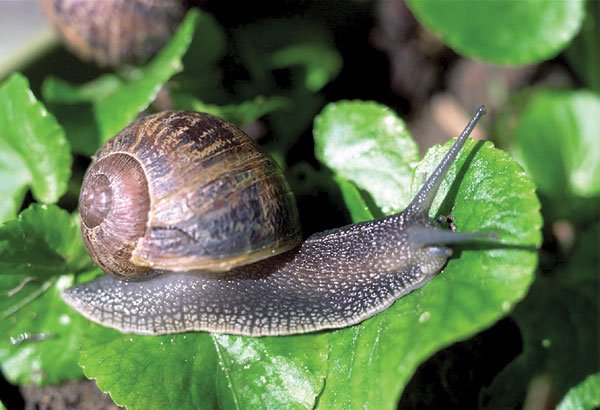Summer’s bad guys. We’re not just talking common snails and
earwigs, but nasty whiteflies and tobacco bud worms (they eat the
blossoms and buds of petunias and geraniums).
This is the time of year
– toward the end of summer –where many garden pests really
become garden pests.
Summer’s bad guys. We’re not just talking common snails and earwigs, but nasty whiteflies and tobacco bud worms (they eat the blossoms and buds of petunias and geraniums).
This is the time of year – toward the end of summer –where many garden pests really become garden pests.
While it may be tempting to run to the garden center and buy the strongest chemical insecticides on the market, you can do Mother Nature a favor (and you and your family, too) if you consider less-potent measures.
For instance, there are many insecticidal soaps, biological controls, and even sticky traps that might do the trick.
Something as simple as a couple pumps of liquid soap mixed with water in your sprayer could do the trick against aphids, mealybugs and other soft-bodied insect pests.
Sometimes even a jet of plain water from the garden hose is enough to dislodge aphids and spider mites, which can not climb back up once knocked off.
Truth be told, sound gardening practices can also go a long way toward preventing problems before they start.
Removing and destroying infected fruits and flowers during the growing season will often prevent or reduce certain pest problems.
Planting resistant plant varieties in the first place will also go a long way toward preventing problems.
Biological sprays are much safer to apply in the garden than insecticidal chemicals.
Bacillus thuringiensis, also known as Bt, is the most widely used biological control. The bacteria attack specific insects, such as those tobacco bud worms or caterpillars.
Bt will take several days before you actually see the insects dying, and you may have to spray several times.
Sticky traps are effective and easy to use.
Different colors of traps attract adult insects to the sticky coating, much like old-fashioned fly paper.
Yellow traps are used for aphids, gnats, leafhoppers and thrips; white traps for whiteflies; blue traps for thrips; and red, round traps for apple maggots.
I even make my own sticky yellow traps by placing a large clear plastic bag over an old Prestone anti-freeze container (which happens to be yellow).
I spray the plastic with a product called Tanglefoot.
When the plastic gets covered with flying insects, I just remove it and put a new bag on and spray again with
Tanglefoot.
One of my favorite sprays is horticultural oil.
Years ago, gardeners only used horticultural oil with dormant oil spray, which could only be applied on dormant deciduous plants to smother insects and eggs in the winter time.
New, refined petroleum-based formulations make it easy to spray at any time of year on most plants.
Since it is still an oil-based spray, avoid spraying on extremely hot days when temperatures are expected to surpass 90 degrees.
The choice is yours, but there are alternatives out there.














